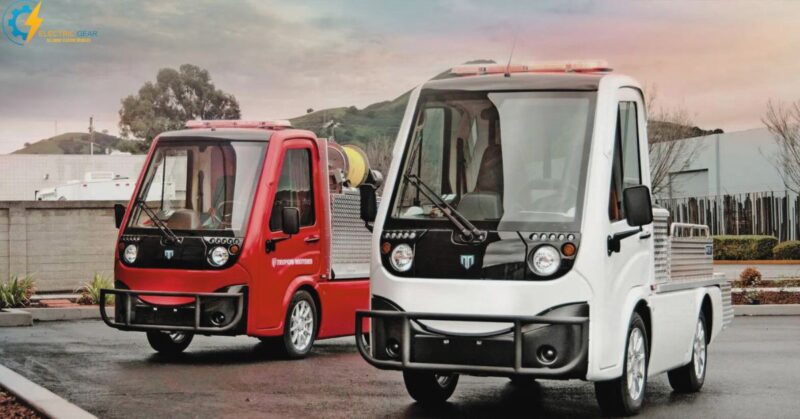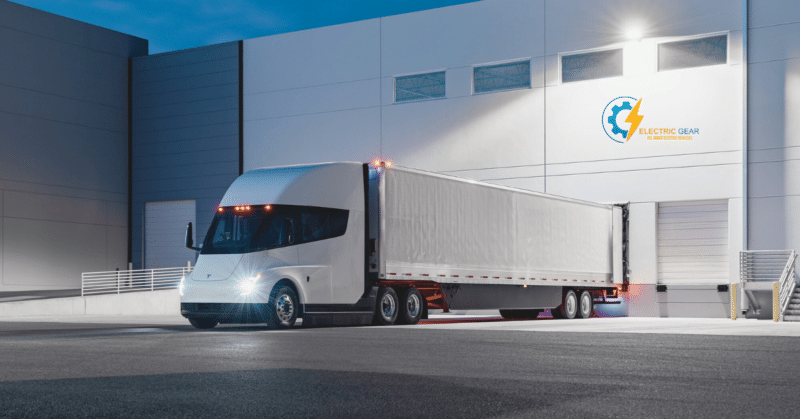A transmission is a mechanical unit that transmits power or multiple torques to the wheels to move the vehicle. So, in this engineering cum-mechanical sense, every car has a transmission.
How many gears does an electric car have always keeps EV aspirants curious. Unlike gas-powered vehicles, electric vehicles do not have conventional multi-speed transmission systems. Instead, they have a single speed. (Exceptions are here, which we will discuss in a later part later of this article.)
It’s mainly because electric motors start producing their full power as soon as they start moving, so they do not need transmission to enhance the power to move the vehicle from a standstill position.
All internal combustion vehicles come with a multi-speed gearbox with different ratios; nearly all electric cars have single-speed transmissions. The Porsche Taycan and the original Tesla Roadster originally came with two-speed gearboxes. However, Tesla later upgraded the gearbox to a single-gear system.
How Many Gears Does an Electric Car Have?
How many gears does an electric car have? This is the question often asked by those going electric. Electric vehicle models and manufacturers might differ in the number of gears they provide.
There are electric vehicles available with either a single-speed or multiple-speed gearbox. It’s worth mentioning that electric vehicles have a considerably broader power range and can create torque from extremely low speeds, so they don’t need as many gears as their gasoline-powered counterparts.
Why Don’t Electric Cars Have Multi-Gear Transmissions?
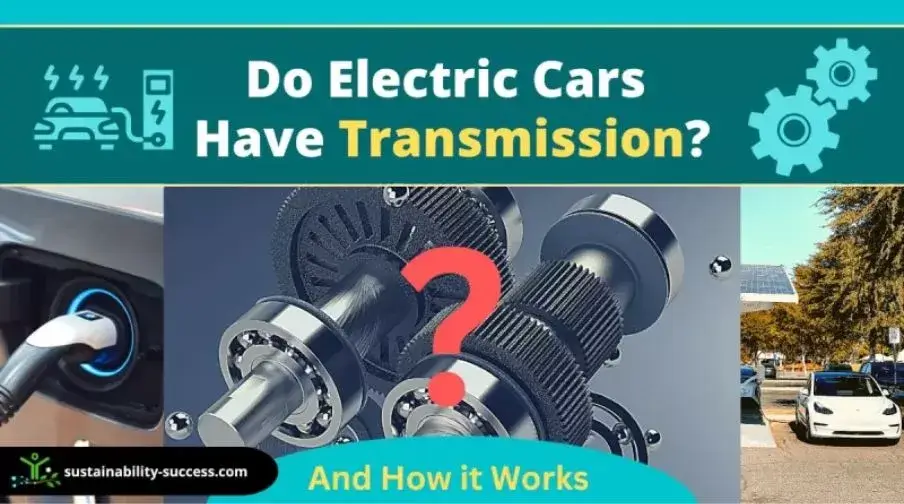
EV’s acceleration is quieter, instantaneous, and smooth because its propulsion acts entirely differently from ICE vehicles.
EVs, in most cases, keep a single alternating current(AC) motor fixed to a gearbox.
EVs have multi-gear sets that spin at different rates, whereas the electric car’s transmission is called a single-speed gear reduction unit, as all the gears are connected and turn simultaneously. This system reduces the motor’s RPM to an applicable rate, driving the wheels about 10 to 1.
It lacks engaging and disengaging of clutches and shifting different gear ranges at different speeds.
EV electric motors are designed to spin as high as 18,000 RPM (In some cases 23,308 RPM) and acquire a speed of up to 200 miles per hour. The motor’s rotational force passes directly from the gearbox, providing smooth acceleration. The non-presence of multiple gears halts the friction of engaging and disengaging clutches.
Seventy-seven per cent of the stored current in electric vehicles is used to power the vehicle, unlike gas-powered vehicles, which convert only 12 to 30 per cent of their power stored in the gas tank to move the car —so it wastes much of its energy in the form of heat.
Can Electric Cars Have Multiple Gears?
EVs have neither gears nor clutches, and they do not have a multi-speed transmission system like traditional gas-powered vehicles. Instead, EVs keep single-speed gear —known as gear reduction units.
Gas-powered vehicles use engine-generated torque to speed the vehicle through a narrow set of gears. The transmission gear system facilitates the drivers to keep the energy needed to efficiently speed up or slow down the vehicle without wasting necessary torque.
EVs, in contrast, produce all their torque at low speeds (even below 1,000 RPM). The torque decreases as the RPM of the motor increases.
Exceptions to the Rule
Very early, electric vehicles used a two-speed transmission; however, it was soon replaced by a single-speed unit.
Another exception is the presently Porsche Taycan, a highly efficient four-door offered with a rear motor and rear-wheel drive, or front and rear motors and all-wheel drive. Surprisingly, it has a two-speed transmission only in the rear, with the front motor driving the front wheels through a single-speed transmission.
Porsche is the case in hand, having a two-speed transmission, which can be more clearly justified in Taycan as it’s performance-focused with a top speed of 140 mph.
Today’s regular use of a single-speed transmission in electric vehicles may change. Porsche’s example of using a two-speed transmission — although only in the rear — may be a forerunner of things to come, as many betterments in EV technology appear firstly in luxury vehicles and later trickled down to lower-priced ones.
Types of the EV Transmission System
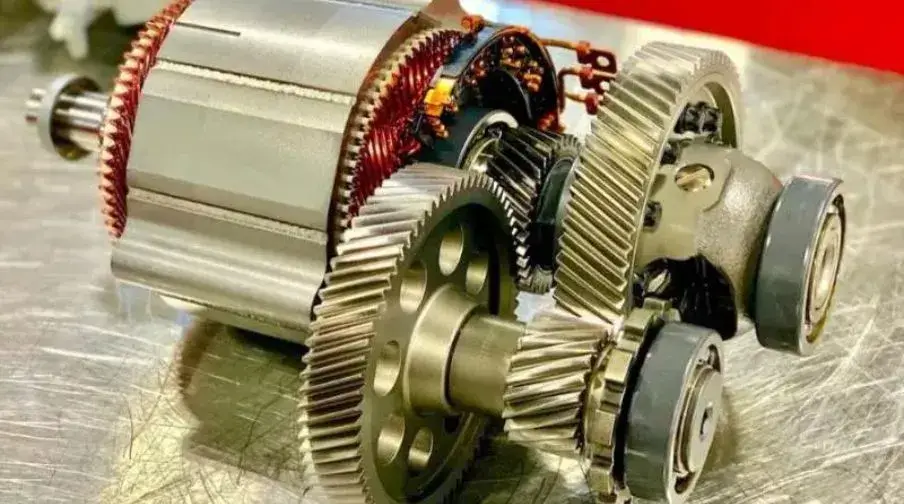
Following are some examples of electric car transmissions:
Single-speed transmission: Transmissions with just one gear are the most basic and typical choice for electric vehicles. It gets its propulsion from an electric motor through a single gear. Because of their low weight and high efficiency, single-speed gearboxes are perfect for battery-powered cars.
Because of their low weight and high efficiency, single-speed gearboxes are perfect for battery-powered cars.
Multi-Speed Transmission: Some electric cars, albeit fewer than you would think, include a gearbox with many gears. A multi-speed gearbox comprises more than one gear and can increase acceleration and peak speed over a standard transmission. Multi-speed transmissions may be more efficient and have a more excellent range than single-speed transmissions, but they are heavier and more complicated.
Direct Drive: No gears are used with a direct drive gearbox. Power is transferred smoothly and efficiently from the electric motor to the wheels through a direct connection. Electric vehicles are increasingly adopting direct drive systems due to their low weight, high efficiency, and low maintenance needs.
Continuously Variable Transmission (CVT): Transmissions that continually vary the gear ratio between gears are known as continuous variable transmissions (CVT), allowing for a more efficient power transfer. Gearbox (CVT) is used in particular electric vehicles, which may increase ride comfort and fuel economy.
Two-speed transmission system: It has just two gears and is occasionally seen in high-performance electric vehicles. While starting, the first gear is utilized to get up to speed quickly, while the second gear is for reaching more incredible speeds.
Whereas two-speed gearboxes have the potential to enhance both acceleration and peak speed, they are heavier and more complicated than their single-speed counterparts.
Why do Electric Cars Have Only One Gear?
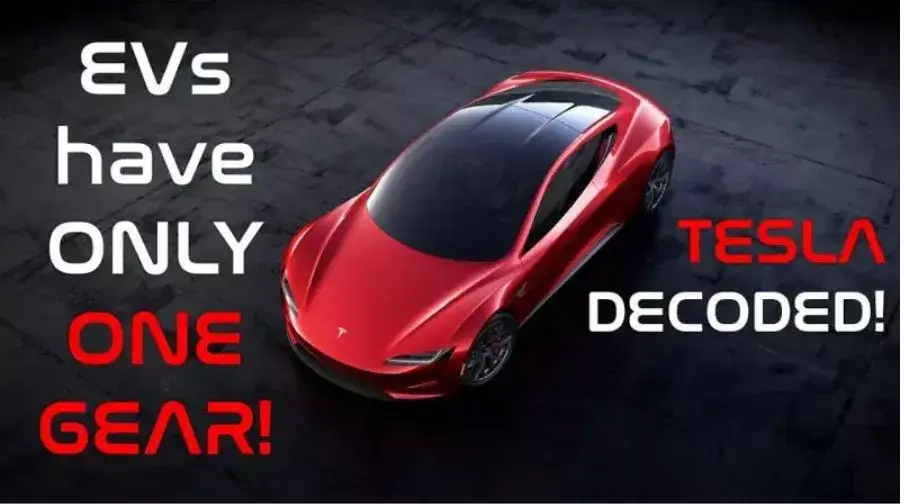
Gears are unnecessary in electric cars because they don’t need a clutch. Most manufacturers do not include multi-speed transmissions in most electric vehicles, unlike those powered by conventional gasoline and diesel engines.
Instead, they have a single-speed transmission with only one gear. Why is that, exactly? It is because they can generate both high RPM and low torque.
Due to their unique propulsion mechanism, electric automobiles only have one gear or a direct drive system. Torque is produced by an electric car’s motor from zero to hundreds of miles per hour. It eliminates the requirement for a conventional multiple-gear gearbox since the electric motor can provide sufficient torque for instantaneous launch.
Electric motors are efficient throughout a broad range of speeds, but internal combustion engines need a variety of gears to maintain the engine operating in its ideal power range. It means a one-speed or direct drive system is required to transmit power from the electric motor to the wheels.
Due to their reduced complexity and ease of maintenance, electric vehicles have taken the market by storm. It aids electric vehicle owners by decreasing their total cost of ownership.
What EVs Use Instead of Transmission
Instead of the standard multiple-speed gearbox in gasoline-powered cars, electric vehicles (EVs) generally employ a direct drive system or a single-speed transmission. An EV’s electric motor has a high torque output throughout a broad speed range, so a simple, natural drive system is needed to get the juice to the wheels.
Since the electric motor is coupled directly to the wheels, there is only one gear in a single-speed transmission, and both rotate simultaneously. No transmission or gearbox is involved in a direct drive system since the electric motor is part of the differential and is connected directly to the wheels.
Using multi-gear in an electric vehicle is becoming rare; however, it is still possible (especially in high-performance versions). However, a multi-speed gearbox’s added complexity and weight might harm an EV’s range and performance, even though it may boost efficiency and peak speed.
How Does Single Transmission Affect EV Efficiency?
A single electric vehicle (EV) transmission can affect its efficiency differently. On the one hand, a single-speed transmission, also known as a direct drive, is a popular choice for many EVs because it simplifies the drivetrain and reduces weight, which can improve efficiency.
Additionally, a single-speed transmission can provide high torque and power delivery, which is beneficial for acceleration and hill climbing. On the other hand, a single-speed transmission may only sometimes be the most efficient option for all driving conditions. For example, the motor may operate at high speeds outside its most efficient range, leading to energy losses and reduced efficiency.
In contrast, a multi-speed transmission can allow the motor to operate at its most efficient speed for a given driving condition, improving efficiency.
In summary, the impact of a single transmission on EV efficiency depends on several factors, including the vehicle’s design, driving conditions, and motor characteristics. While a single-speed transmission is a popular choice for many EVs, a multi-speed transmission may improve efficiency in certain situations.

Imran is an experienced content writer who crafts engaging and informative articles for a variety of industries. With a keen eye for detail and a passion for storytelling, Imran delivers high-quality content that resonates with readers. Whether he’s writing blog posts, social media content, or website copy, Imran is committed to delivering compelling content that drives results.




